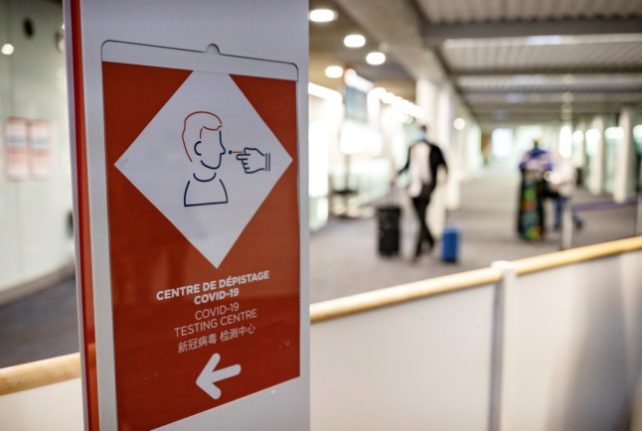The Centers for Disease Control and Prevention (CDC) added France and French Polynesia to its “Level 4: Very High” list for Covid-19 levels, as French authorities grapple with a fourth wave of the virus.
“If you must travel to France, make sure you are fully vaccinated before travel,” the CDC guidance states.
“Because of the current situation in France, even fully vaccinated travelers may be at risk for getting and spreading COVID-19 variants.”
The US State Department was even more clear in its travel advisory published on Monday: “Do not travel to France due to COVID-19.”
The travel warning is advisory only, but can invalidate travel insurance if you travel against official advice.
The move came on the same day that France introduced health passports for many daily activities, including visiting a café and taking a high-speed train.
READ ALSO Everything you need to know about travel between France and the USA or Canada
France has managed to slow down the rise in Covid infections over the last ten days as the graph below from Le Parisien’s journalist Nicolas Berrod shows, but case numbers remain high, particularly in popular tourist destinations on the Mediterranean and Atlantic coasts, and in France’s overseas territories.
Le taux d'incidence tous âges confondus en France est en très légère augmentation pour le septième jour consécutif (+2,8% en une semaine).
1/ ⤵️ #Covid19 pic.twitter.com/uGQvMnfgHB
— Nicolas Berrod (@nicolasberrod) August 9, 2021
Lockdown measures have been introduced in the overseas territories of Guadeloupe, Martinique in the Caribbean and the island of La Réunion in the Indian Ocean, and many local authorities have reintroduced measures such as mandatory masks outdoors.
France is currently averaging 22,294 new Covid cases per day.
The United States is currently on France’s green travel list, meaning that anybody can travel to France for any reason from the USA, regardless of their vaccination status.
The CDC also added Iceland, Israel, Thailand, Aruba and Eswatini to its Level 4 list on Monday. Other European countries like Spain, Portugal, Ireland and the UK were already on the list, which represents the highest of four categories of countries based on Covid levels, ranging from “Low” to “Very High”.



 Please whitelist us to continue reading.
Please whitelist us to continue reading.
Member comments